
[045] Asplenium trichomanes, Maidenhair Spleenwort
Asplenium ruta-muraria, Wall-rue
Asplemium ceterach, Rustyback
Introduction
Asplenium trichomanes, Asplenium ruta-muraria and Asplenium ceterach are three species of fern all in the same genus as Hart’s Tongue Fern. All three are very small plants that like growing in walls.
Asplenium trichomanes is called Maidenhair Spleenwort.
Asplenium ruta-muraria is called Wall-Rue although it is not related to the plant called Rue.
Asplenium ceterach is called Rustyback.
Taxonomy
Kingdom – Plants
Division – Vascular Plants
Class – Polypodiopsida – Ferns (and Horsetails)
Order – Polypodiales – Ferns
Suborder – Aspleniineae
Family – Aspleniaceae (Spleenworts)
Genus – Asplenium
Scientific Name – Asplenium scolopendrium; Asplenium ruta-muraria; Asplenium ceterach
Name
The whole genus are called Spleenworts and asplenium is a Latinized form of spleenwort.
Wiktionary ways that this comes from its use in treating anthrax in livestock. Wikipedia attributes it to the Doctrine of Signatures, which asserts that it must be good for the spleen because the spores are the same shape as a spleen. Either way, it’s an ancient belief.
I can’t say anything about maidenhair. Wall-rue does look like the plant Rue even though it is not related. Rustyback has rusty coloured spores on the back of the leaves.
Trichomanes is a Greek word for fern, and ruta-muraria is Latin for rue-wall. Ceterach may come from a French word cétérac, possibly used for Rustyback.
Asplenium
The genus has about 700 species. The taxonomy is unclear and some pteridologists split Asplenium into several genera. Ceterach is one of these genera and its type species is Rustyback, then called Ceterach officinarum.
Maidenhair Spleenwort
The first impression of Asplenium trichomanes is that it is like a very small version of the much more familiar fern, [284] Bracken, but it is much smaller, a lighter green in colour, and it grows out of walls.
It has long, thin, tapering, simply divided fronds. [All the words are different for ferns. We know they are leaves but we have to call then fronds – sometimes.]
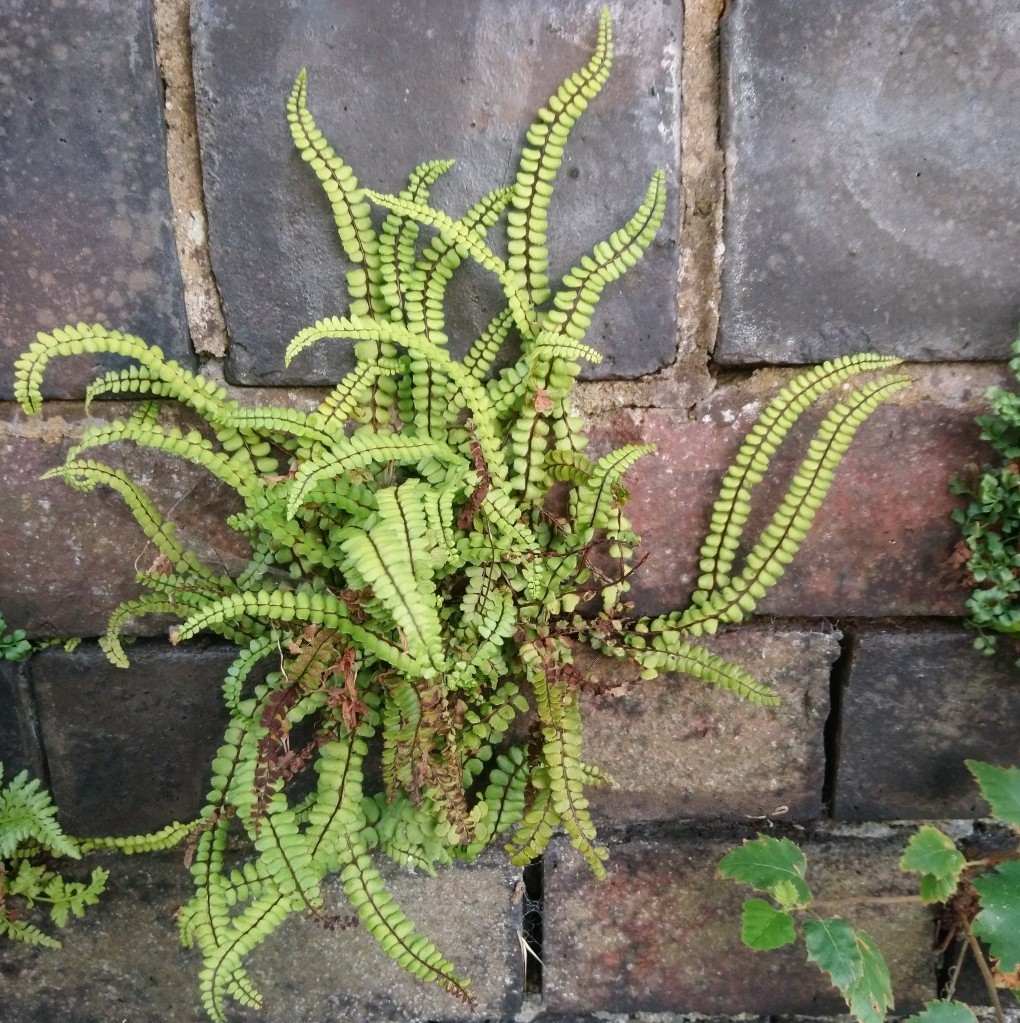

I mentioned the reproductive spores yesterday and showed them for Asplenium scolopendrium. The back of the leaves of Asplenium trichomanes are covered in tiny spores.
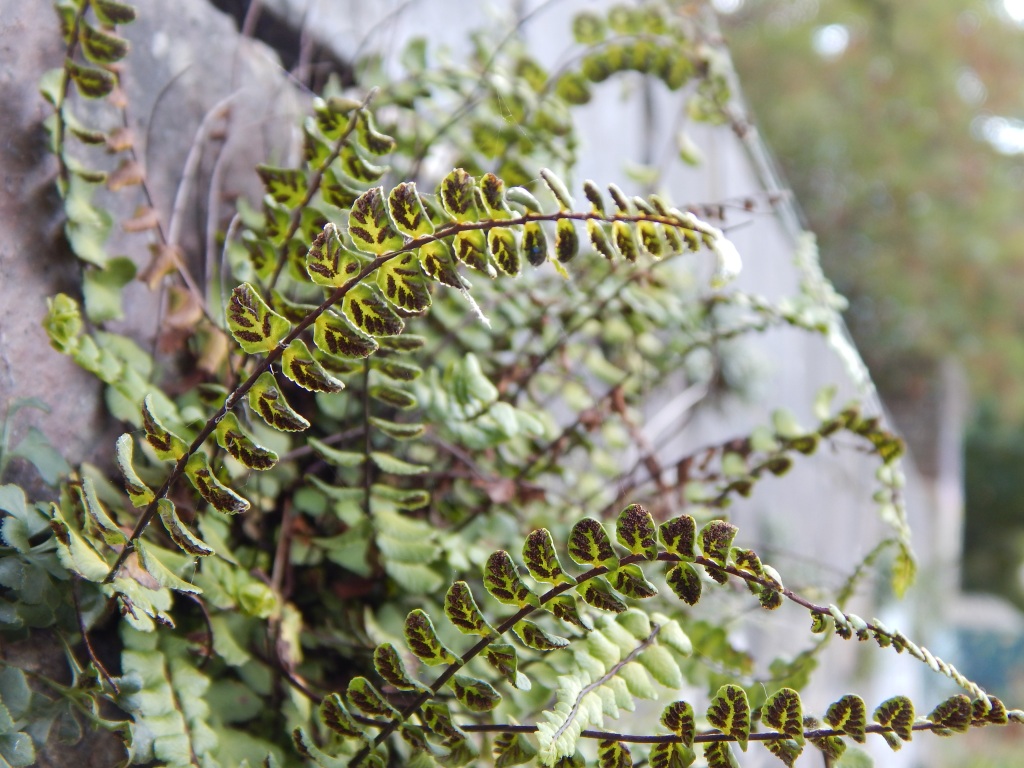
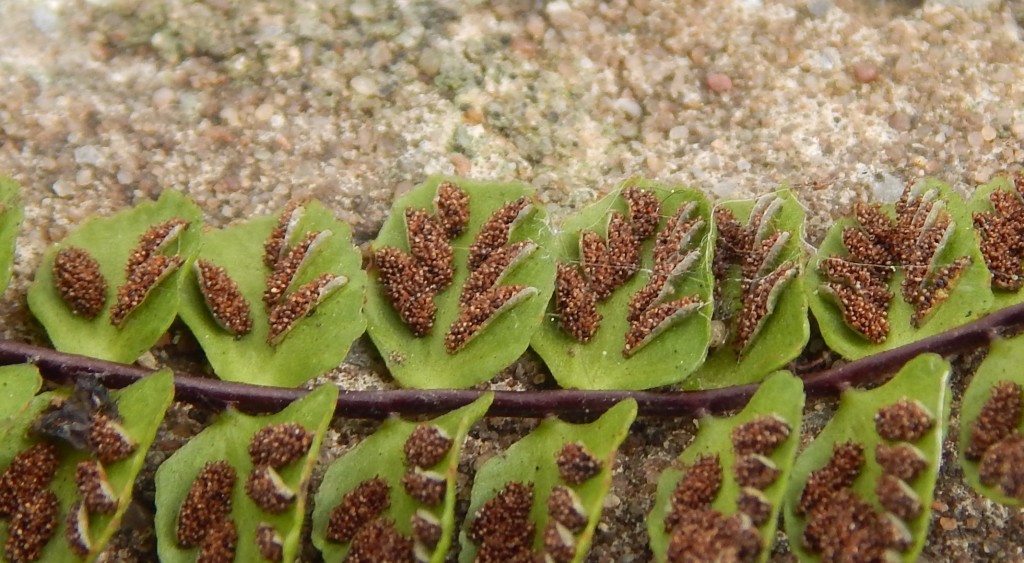
Wall-Rue
The thick, flat leaves of Asplenium ruta-muraria don’t look so much like ferns. They are a much darker green but the plant is just as small.
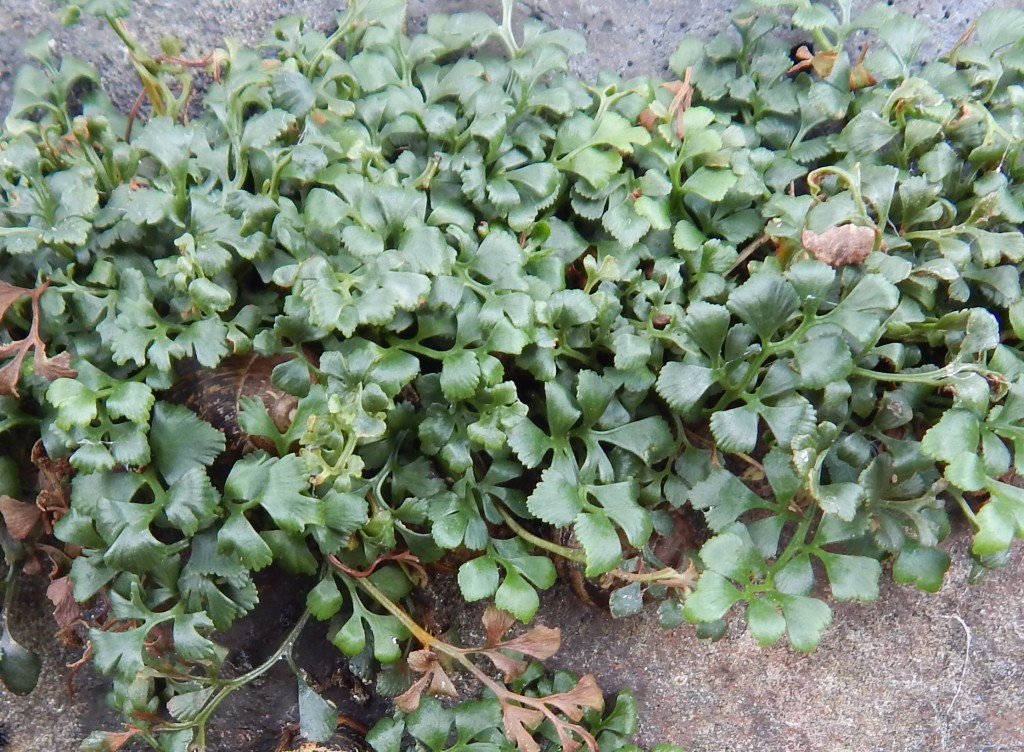

If you look on the back, they also have lots of very small spores.
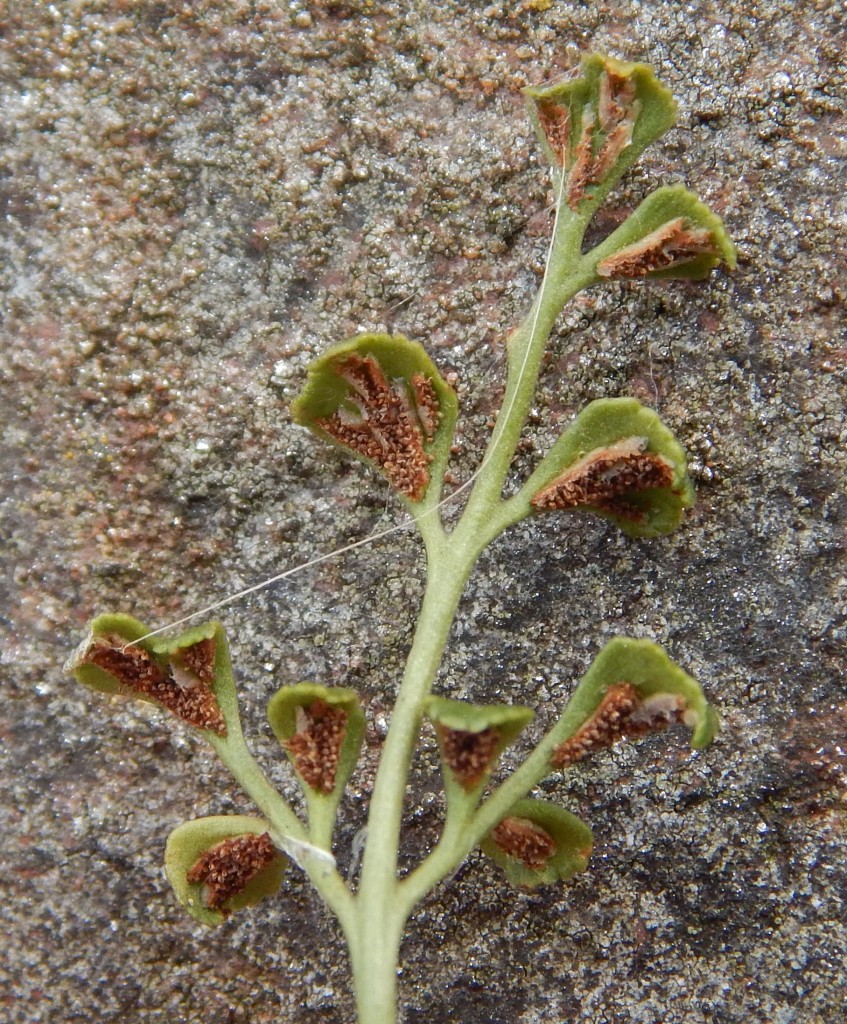
Rustyback
Asplenium ceterach looks a bit in between the other two. It’s a bit like Asplenium trichomanes but with rounder, chubbier and darker leaves.

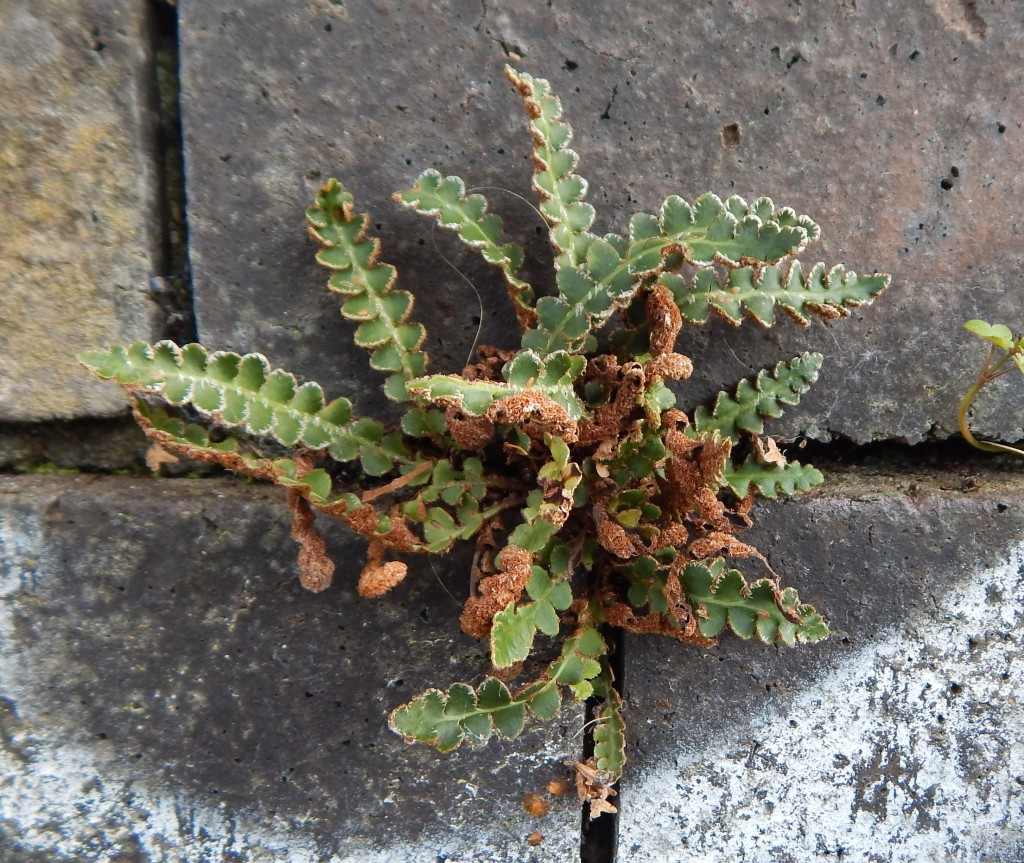
The last picture looks a bit untidy because a few of the leaves have curled over. The backs are extensively covered in spores in a way that gives this species its name.
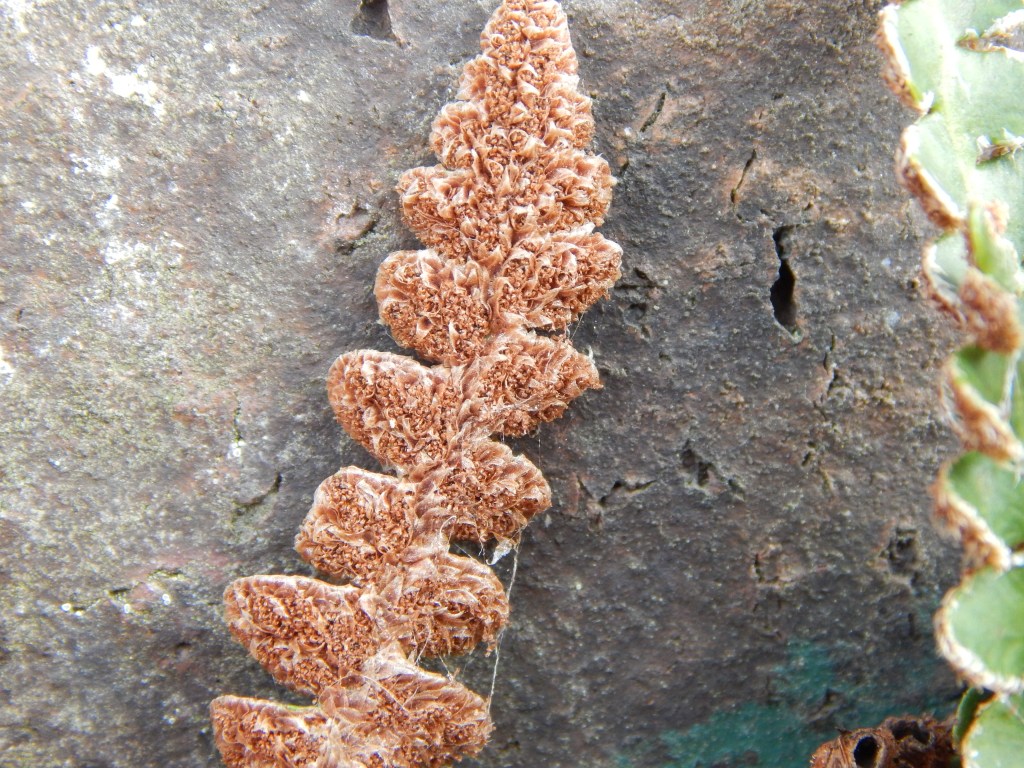
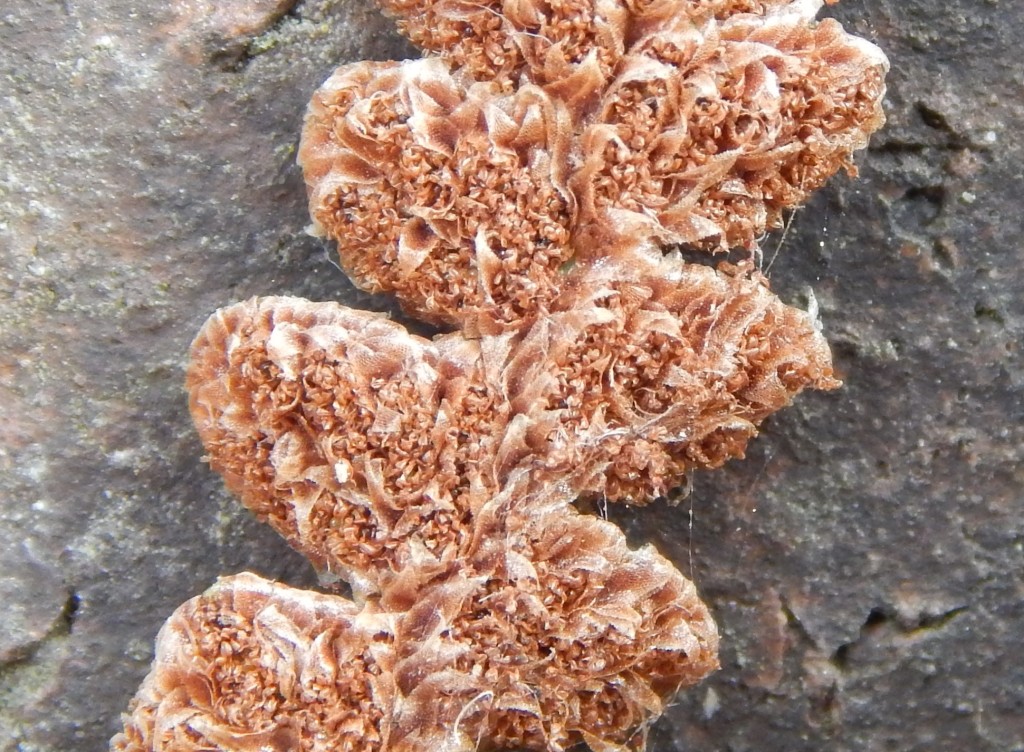
Habitat and use
All three are widespread in Britain and have much wider distributions abroad. All three like growing on walls. In places you can see these species growing next to each other as shown in the header picture.
Other Notes
On most days I walk past a section of brick wall about fifty metres long and has all three species. It’s where all my pictures come from but I have these species on other walls.
See also
It is always worth looking at walls. You may also see [110] Ivy-leaved Toadflax and the aptly named Pellitory-of-the-wall.
